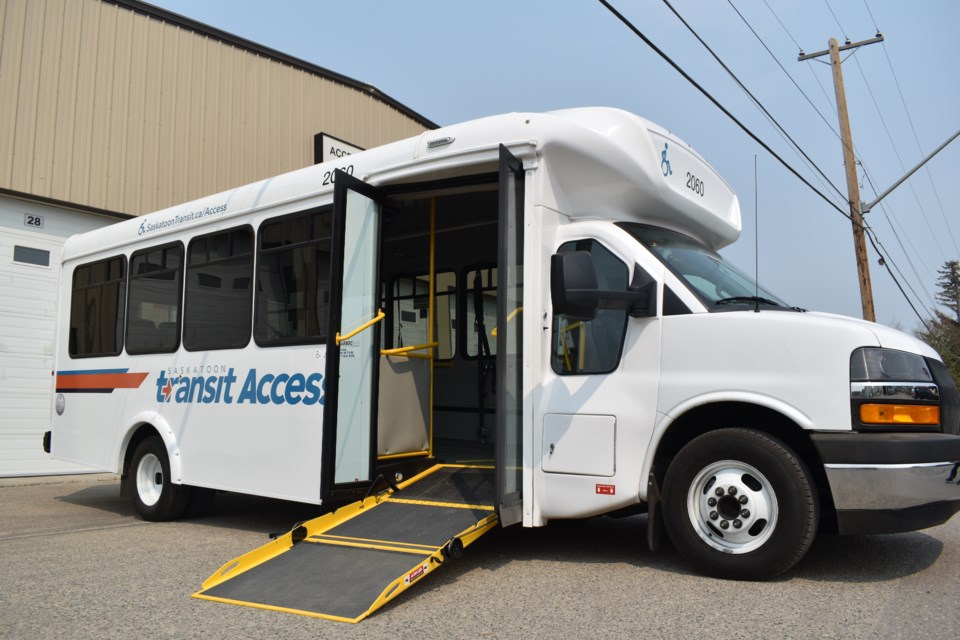Saskatoon Access Transit Manager Tracey Davis says they are looking to add at least five more low-floor Access Transit buses to the fleet, a move that would further improve their service to residents with reduced mobility.
SAT recently purchased two low-floor buses, which gives persons with disabilities more freedom and independence using a ramp compared to a lift or stairs.
“Our goal is to add more of these buses to our fleet. The more low-floor buses that we have, the more opportunity for us to serve more of people’s needs. Definitely [low-floor bus] has a place in our future fleet. We’ve been approved funding for five more buses through the Provincial Transit Assistance for People with Disabilities program,” said Davis.
“We’ll certainly be adding some more of these buses to our fleet from that funding. We are continually working to improve our service. We want all our customers to have safe and convenient transit options. Accessible transportation is a building block for a fair, inclusive, and equitable community. Providing as much flexibility in Saskatoon Transit’s fleet of buses improves that accessibility.”
The low-floor bus cost $170,000 and funding comes from the city, internally through the local budget, and the TAPD from the Provincial government. SAT currently has 28 buses that provide services to people with reduced mobility. Twenty-one are travelling around the city during peak hours.
Davis said having low-floor buses is more efficient compared to those that have a lift.
“Our current buses have stairs and the lift at the back. Traditionally, individuals on a wheelchair or a scooter or a power chair would be loaded onto a lift, lifted in the air and put onto the bus. That’s how they get in the bus. Prairie winter is cold and very windy. You’re up there five, six feet and it’s not a pleasant experience.”
“Our goal was to improve customer experience. We’ve wanted to have a better experience for our passengers and this in one way to do it [having low-floor buses]. Now, that person who is in a wheelchair or a power chair or a scooter would be able to go get on and off the bus by themselves. They no longer need that assistance.”
She added that having the ramp in the low-floor bus would also improve safety both for the passenger and their driver. “The lift sometimes is a bit wobbly and for our operators, because they go up and down a lot in their route to assist passengers. They would no longer carry walkers up the steps, they just roll up and down the ramp. Especially during winter. We have cold and icy winters. It’s just makes things easier.”
The low-floor buses have a ramp and an INQLINE boarding system that help the operators in assisting passengers to board safely. Passengers using a walker, wheelchair, or power chair will no longer use a lift or the stairs in boarding the bus.
“I’m very proud that Access Transit has incorporated low-floor buses into the fleet. We are excited to see how these new vehicles will improve accessibility for our passengers,” said Saskatoon Transit Director Jim McDonald.



